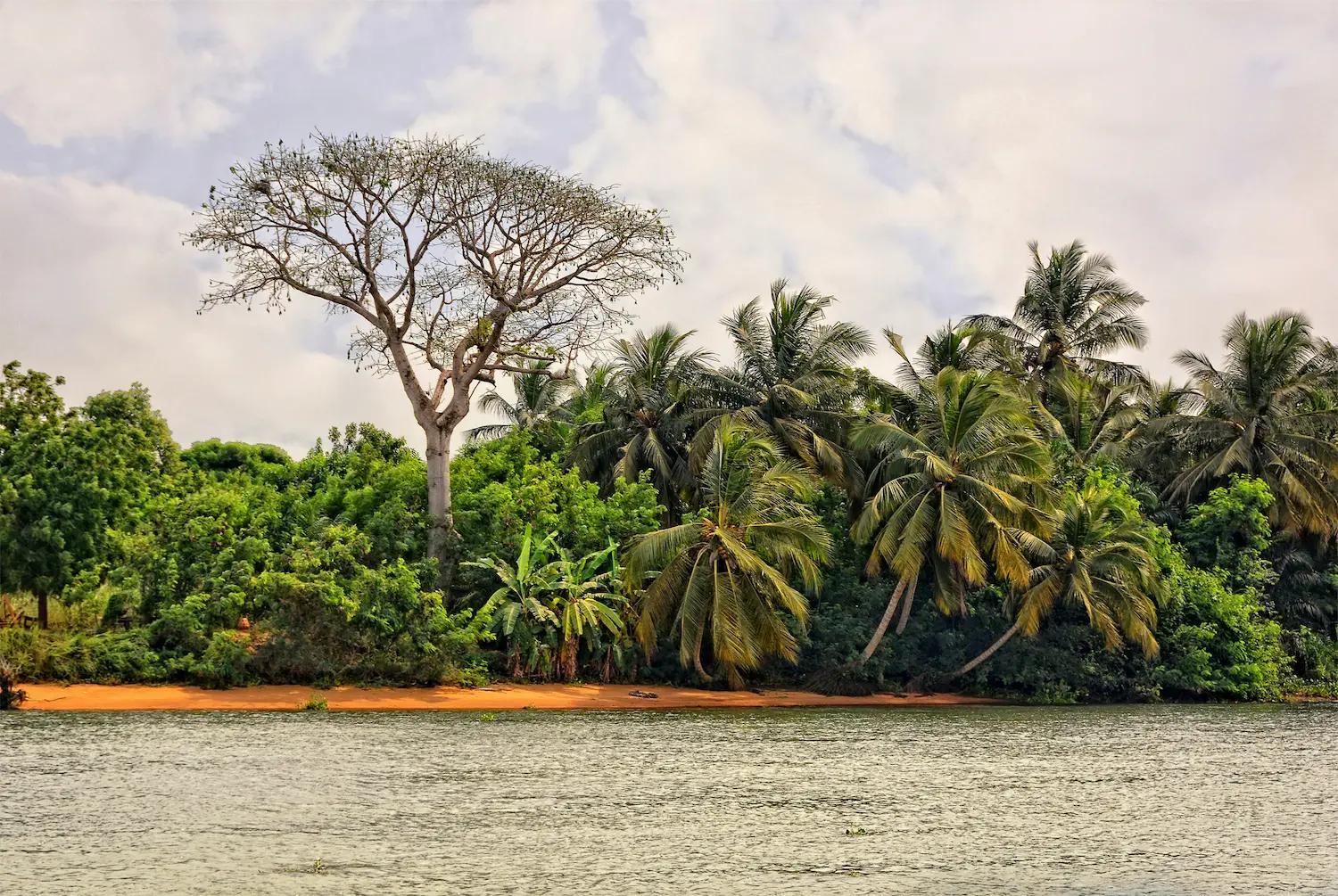
Ghana
Kofi Awoonor
The land of the Ashanti
Kofi Awonoor was one of the most important poets of Ghana, a country that he saw come into being and become independent in 1957 and then, amidst countless struggles, come to be a relatively stable country with stronger economic growth than many of its neighbors.
While this is recent history, the territory of the country we now call Ghana has been ruled by some of the most important states in African history, such as the Denkyira and the subsequent Ashanti empire. The latter had its heyday during the 18th century and still continues to exist today along with other traditional sub-state units recognized by the Ghanaian constitution. Similarly, a group of traditional Ashanti buildings in the north of the country are still extant and have been designated a UNESCO World Heritage Site.
The territory
The Ghanaian territory lies a few degrees above the Equator and stretches, from south to north, from the low-lying, sandy coastlines that overlook the Gulf of Guinea, to a northern border that increasingly risks being the front line of the advancing desert. While land elevations are limited and modest, the Volta basin is extremely important, consisting not only of the Volta, Volta Bianco and other minor rivers, but above all of Lake Volta, the largest artificial lake in the world, created by the Akosombo Dam in 1966.
The climate is predominantly tropical, but the northern part of the country is much drier than in the south and, increasingly, winds laden with sand and dust are coming in from the desert. This is another reason why the landscape of the south is typified by tropical forest, where mahogany, ebony and cedar prevail, while the centre and north are covered by savannah, with sparse shrubs and few trees.
Treedom in Ghana
Our work in Ghana started in the northern part of the country, in the Daka River area. This is one of the tributaries of the Volta and represents an important water resource for the ecosystem and the local population. We are in one of the driest areas of the country and one of the fronts of the desert's advance, an advance that we are trying to limit, thanks in part to ambitious projects such as the so-called Great Green Wall: a "wall" of trees stretching from the Sahel to the Horn of Africa.
Work began with the planting of a mix of forest and fruit species, including mango, cashew, mahogany and kapok. The emphasis of the work was on training the farmers in the correct methods for managing not only the trees, but also the area's natural resources to prevent their depletion.
Trees attract water
Over the years, we have seen the great potential for developing valuable projects in Ghana. The aim is to offer training, resources and opportunities to the beneficiaries involved, as well as to improve the biodiversity of the project sites and increase soil fertility and prevent desiccation.
In many parts of Africa, it is said that trees attract water. This may just sound like local folklore, but it captures some aspects of the positive action that trees have in maintaining water resources. For example, the water that seeps into the underground aquifer is filtered not only by rocks but also by tree roots, just as the presence of trees along the banks of streams reduces water evaporation in the dry season and prevents flooding in the rainy season.
153,211
trees planted in Ghana
4,517
beneficiaries involved in Ghana
